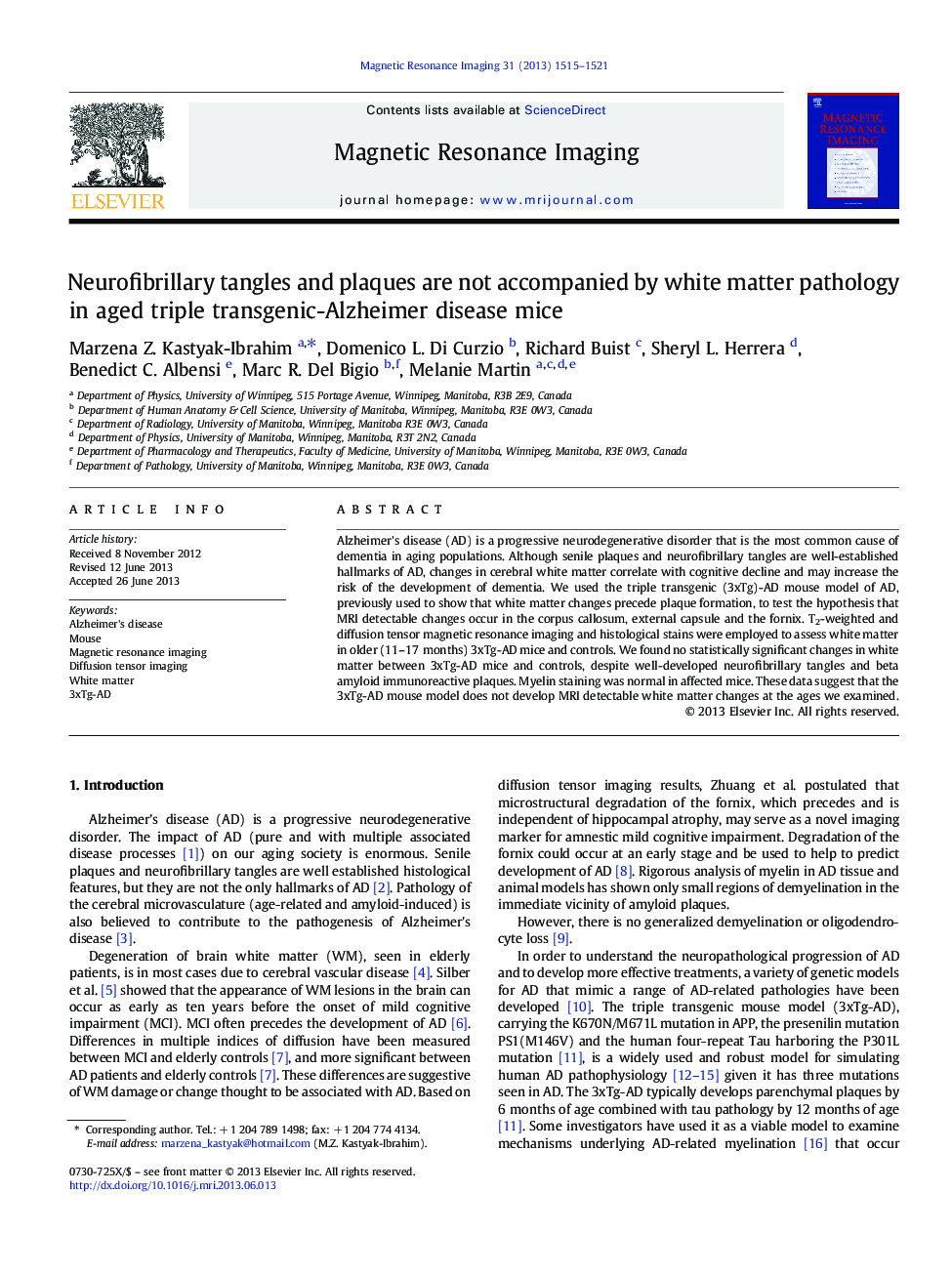| Article ID | Journal | Published Year | Pages | File Type |
|---|---|---|---|---|
| 10712647 | Magnetic Resonance Imaging | 2013 | 7 Pages |
Abstract
Alzheimer's disease (AD) is a progressive neurodegenerative disorder that is the most common cause of dementia in aging populations. Although senile plaques and neurofibrillary tangles are well-established hallmarks of AD, changes in cerebral white matter correlate with cognitive decline and may increase the risk of the development of dementia. We used the triple transgenic (3xTg)-AD mouse model of AD, previously used to show that white matter changes precede plaque formation, to test the hypothesis that MRI detectable changes occur in the corpus callosum, external capsule and the fornix. T2-weighted and diffusion tensor magnetic resonance imaging and histological stains were employed to assess white matter in older (11-17Â months) 3xTg-AD mice and controls. We found no statistically significant changes in white matter between 3xTg-AD mice and controls, despite well-developed neurofibrillary tangles and beta amyloid immunoreactive plaques. Myelin staining was normal in affected mice. These data suggest that the 3xTg-AD mouse model does not develop MRI detectable white matter changes at the ages we examined.
Keywords
Related Topics
Physical Sciences and Engineering
Physics and Astronomy
Condensed Matter Physics
Authors
Marzena Z. Kastyak-Ibrahim, Domenico L. Di Curzio, Richard Buist, Sheryl L. Herrera, Benedict C. Albensi, Marc R. Del Bigio, Melanie Martin,
